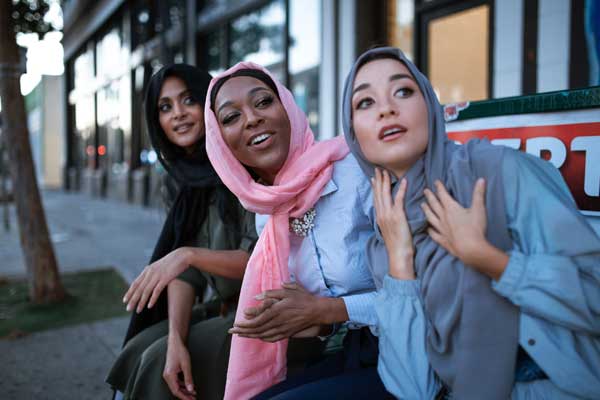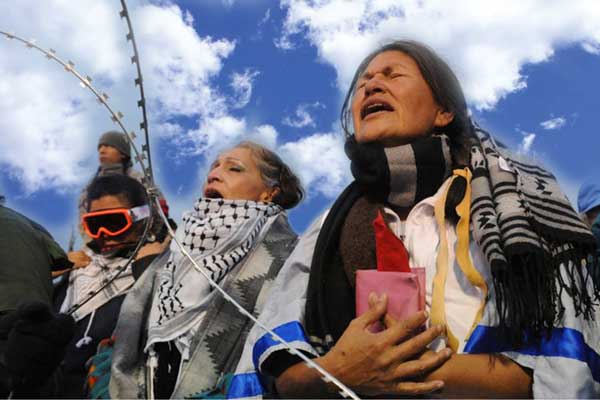As May unfolds and the promise of flowers after April showers is fulfilled, we find ourselves in the middle of another vibrant spring. With Ramadan and Eid-ul-Fitr behind us, the Muslim community in the United States is left to the routine of shifting American celebrations. Easter décor makes way for Mother’s Day preparations and Fourth of July fireworks. Amidst this seemingly never-ending cycle of festivities, another notable occasion passed unnoticed in the first week of May. Many Americans recently, in a mindless way, celebrated Cinco de Mayo, or the Fifth of May, a holiday often misunderstood and adopted from Mexican culture, characterized by fiestas replete with sombreros, tacos, and margaritas. Frequently confused with Mexico’s Independence Day (which falls on September 16), Cinco de Mayo is vastly different. Contrary to popular opinion, it has no connection to Mexican independence from Spain but instead commemorates a battle against France with surprising ties to Islamic history.
 The Franco-Mexican War erupted from 1861 to 1867 due to Mexico’s suspension of debt repayments to European powers, triggering French intervention. Napoleon III used Mexico’s economic situation to justify invading in 1861 to expand French influence in the Americas and establish a French-controlled regime. In 1863, the French captured Mexico City and established the Second Mexican Empire, with Maximilian I as Emperor, aided by the French military. The conclusion of the American Civil War in 1865 prompted the United States to pressure France to withdraw its troops. US intervention, coupled with internal Mexican resistance, led to the empire’s collapse, Maximilian’s execution, and the end of French involvement in Mexico.
The Franco-Mexican War erupted from 1861 to 1867 due to Mexico’s suspension of debt repayments to European powers, triggering French intervention. Napoleon III used Mexico’s economic situation to justify invading in 1861 to expand French influence in the Americas and establish a French-controlled regime. In 1863, the French captured Mexico City and established the Second Mexican Empire, with Maximilian I as Emperor, aided by the French military. The conclusion of the American Civil War in 1865 prompted the United States to pressure France to withdraw its troops. US intervention, coupled with internal Mexican resistance, led to the empire’s collapse, Maximilian’s execution, and the end of French involvement in Mexico.
The Battle of Puebla occurred on May 5, 1862, during the Franco-Mexican War, and it holds profound significance as a pivotal victory for Mexican forces against the sizable and better-equipped French army. Despite daunting odds, the Mexican army successfully defended the city of Puebla against French invasion. This triumph became emblematic of Mexican resilience and patriotism, strengthening morale and inspiring resistance against French occupation. While the Battle of Puebla did not stop the eventual French occupation of Mexico City and the establishment of the Second Mexican Empire, it endures as Cinco de Mayo, a holiday commemorating the Mexican army’s triumph over a superior French force. Cinco de Mayo is celebrated in the city of Puebla and other places in Mexico on a lesser scale, with parades and re-enactments of the battle between Mexican and French soldiers. It is not considered a major holiday in Mexico, but according to History.com, Cinco de Mayo was popularized in the U.S. in the 1960s by Chicano (Mexican American) activists inspired by the victory of indigenous Mexicans over European forces. Now, Cinco de Mayo is celebrated more in the U.S. than in Mexico.
Notably, the connection between Cinco de Mayo and Muslims arises from a lesser-known aspect of history. During the Franco-Mexican War, while France engaged Mexico, it concurrently held colonies in North Africa and the Muslim world. This context meant that Muslim Algerian and Egyptian subjects from French colonies participated in the conflict alongside French soldiers, including the Battle of Puebla. Depictions of this battle often feature Muslim soldiers, identifiable by their attire, adding a unique layer to the historical narrative. Reflecting on the role of Muslims in the Franco-Mexican War prompts questions about their agency and the complexities of their involvement. Perhaps they sympathized with the indigenous Mexicans who fought to protect their land from the same colonizing force they once faced. Were they coerced combatants fighting battles for their oppressors in foreign lands, or did they willingly align with their French colonizers? Did any of these soldiers get captured, surrender, or flee and go on to settle in Mexico? These inquiries compel deeper examination and contemplation. What is certain is the undeniable presence of Muslims on Mexican lands during that crucial time.
Muslim Imprints on Mexico
 Muslims have left enduring imprints on Mexican soil throughout history, from early colonial encounters to contemporary migrations. From the 16th century onward, waves of Iberian, African, and South Asian Muslim migrants have been involved in shaping Mexican society, contributing to its cultural fabric. Aside from the documented presence of Iberian and North African Muslims and enslaved West Africans during the colonial period, the Spanish also sought indentured laborers from South Asia, predominantly British India (present-day India, Pakistan, and Bangladesh), to fill labor shortages in Mexico. Among this group were Muslims, Christians, and Hindus. Over time, the descendants of enslaved Muslims and migrants integrated into Mexican society, while others maintained distinct cultural identities within diaspora communities.
Muslims have left enduring imprints on Mexican soil throughout history, from early colonial encounters to contemporary migrations. From the 16th century onward, waves of Iberian, African, and South Asian Muslim migrants have been involved in shaping Mexican society, contributing to its cultural fabric. Aside from the documented presence of Iberian and North African Muslims and enslaved West Africans during the colonial period, the Spanish also sought indentured laborers from South Asia, predominantly British India (present-day India, Pakistan, and Bangladesh), to fill labor shortages in Mexico. Among this group were Muslims, Christians, and Hindus. Over time, the descendants of enslaved Muslims and migrants integrated into Mexican society, while others maintained distinct cultural identities within diaspora communities.
The legacy of these influences persists, evident in architectural motifs, culinary traditions, and religious practices across Mexico. In contemporary times, the presence of Islam in Mexico continues to evolve. The late 20th and early 21st centuries witnessed a resurgence of Islam among Mexicans and Latin Americans, contributing to a vast and diverse Muslim population throughout the region. Still, more Mexican Muslims find themselves here on U.S. soil as immigrants and descendants of immigrants, joining the greater Latino Muslim presence in America’s mosques. While some members of this community are converts, others trace their heritage to generations of practicing Muslim families. Educating youth and elders within our communities about this shared history is essential to cultivate appreciation for the cultural, historical, and spiritual connections between Islam and Latin American culture.
The influence of Islam on Mexican society is profound and enduring, evident in even the day-to-day lives of its citizens. Guadalajara, one of Mexico’s largest cities, bears an Arabic name derived from Wadi al hijara (Valley of Stones). Some celebrities like Salma Hayek, Jaime Camil, Alejandro Bischir, and Peso Pluma have Arab ancestry. One of Mexico’s most beloved culinary treasures, tacos al pastor, traces its origins back to Lebanese immigrants. Although many Arab immigrants were also Christian, there have also been Muslim-Arab and Turkish migrations since the 20th century. With over 120,000 Muslims currently residing in Mexico and a significant conversion trend observed among indigenous Mexican Mayans in the state of Chiapas since 1989, Islam’s presence in the country is becoming more visible and continues to grow. The Muslim community in Mexico enjoys access to a network of more than forty mosques, including four in the capital , Mexico City, making Islamic worship and community engagement accessible across the nation, with only seven out of thirty-two states currently lacking a mosque, according to Centro Salafi de Mexico.
Understanding and celebrating the ties between Islam and Latin American culture ultimately enriches both communities. The enduring impact of Iberian, Arab, and African Muslims on Mexican society highlights the intersections of diverse cultures and histories. From linguistic influences to culinary masterpieces, the cultural fusion between Islam and Latin America exemplifies the richness of human heritage. In Mexico today, mosques are tucked away like precious gems, serving as centers of worship, learning, and community for Mexican Muslims and Muslim tourists, reflecting the mostly unknown yet enduring presence of Islam in the region. Although Muslims do not typically observe Cinco de Mayo, the legacy of Islam in Mexico is undoubtedly something to celebrate.
For those interested in learning more about Islam in Mexico, see here and here.





